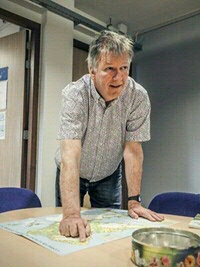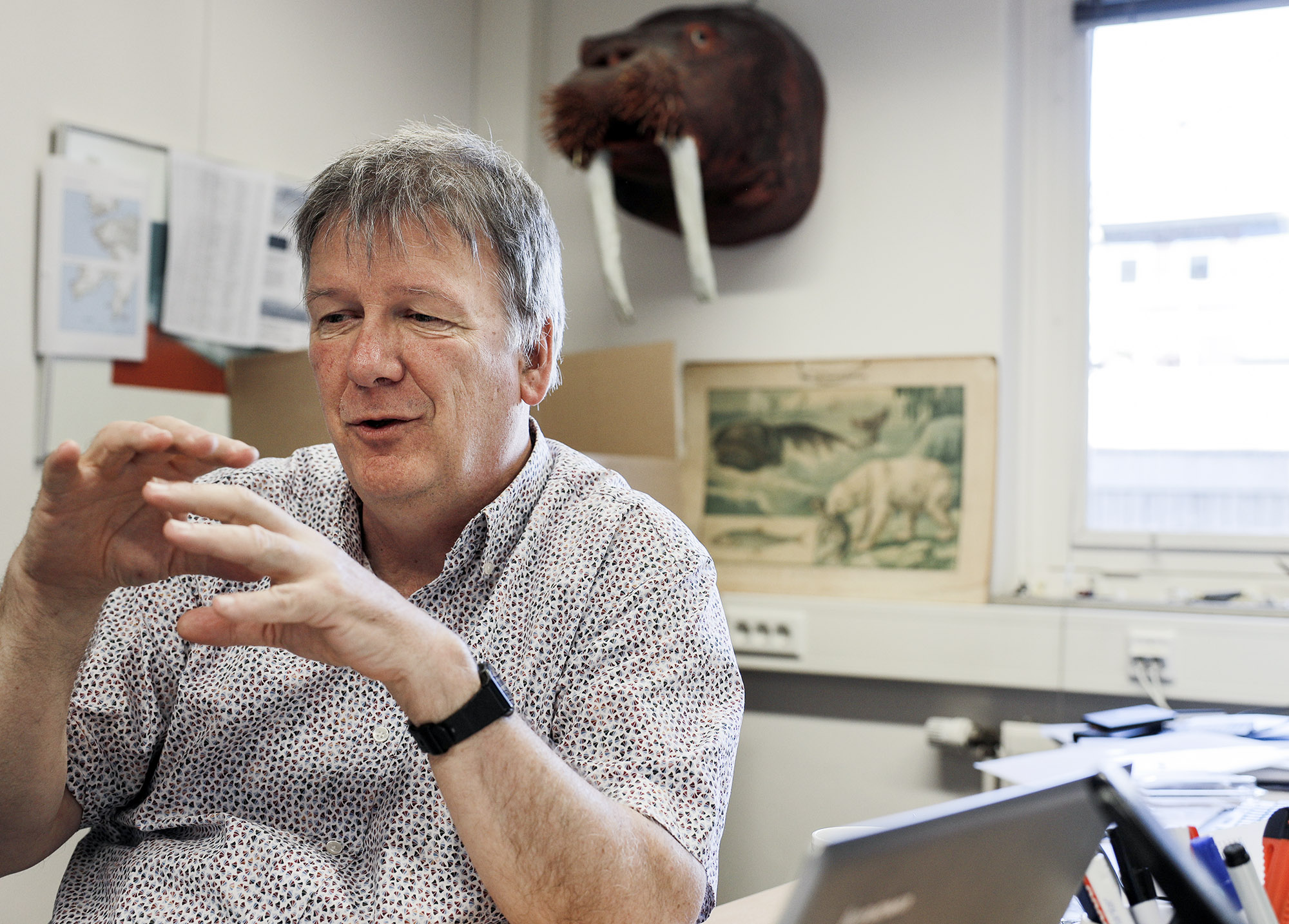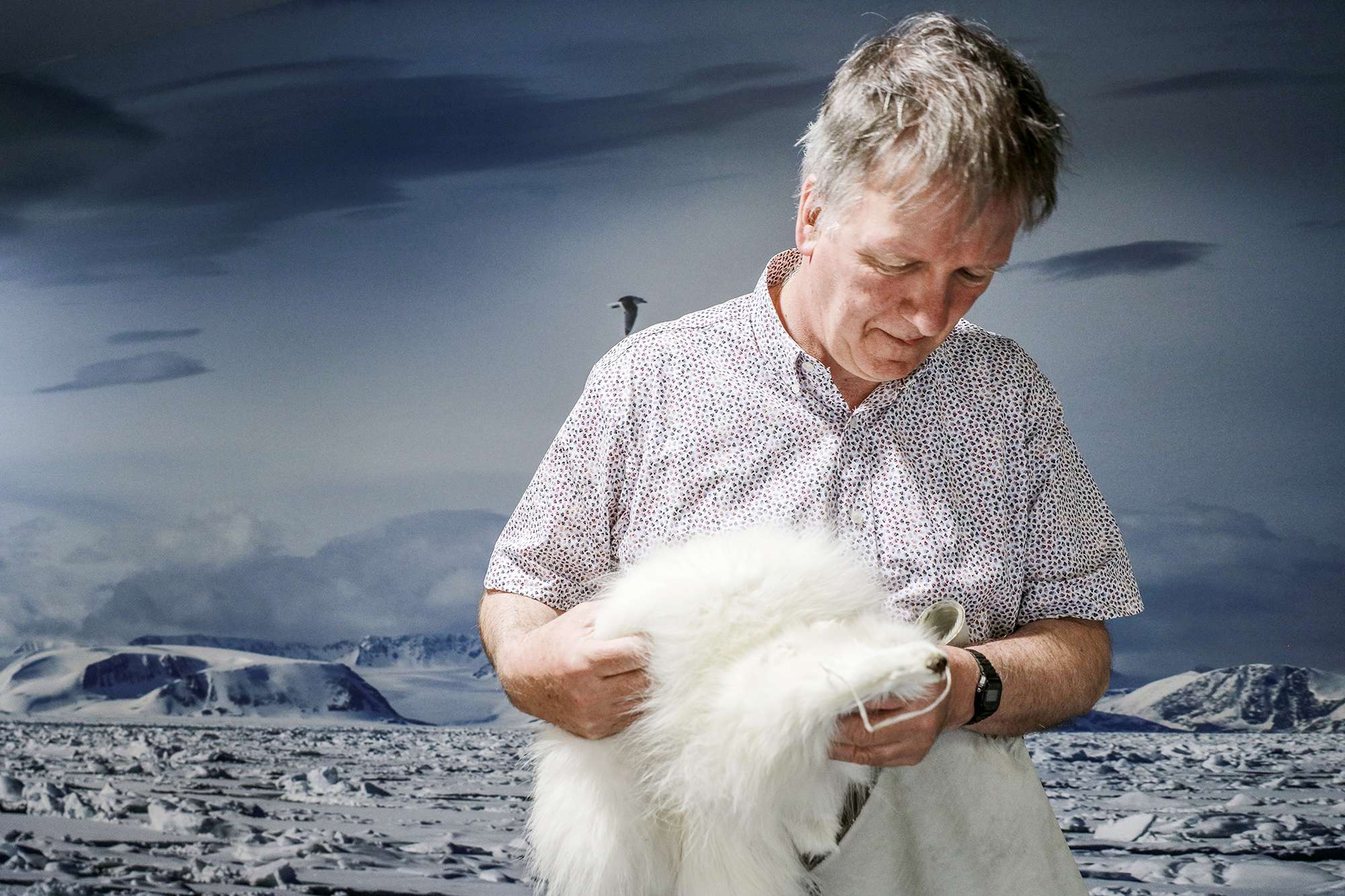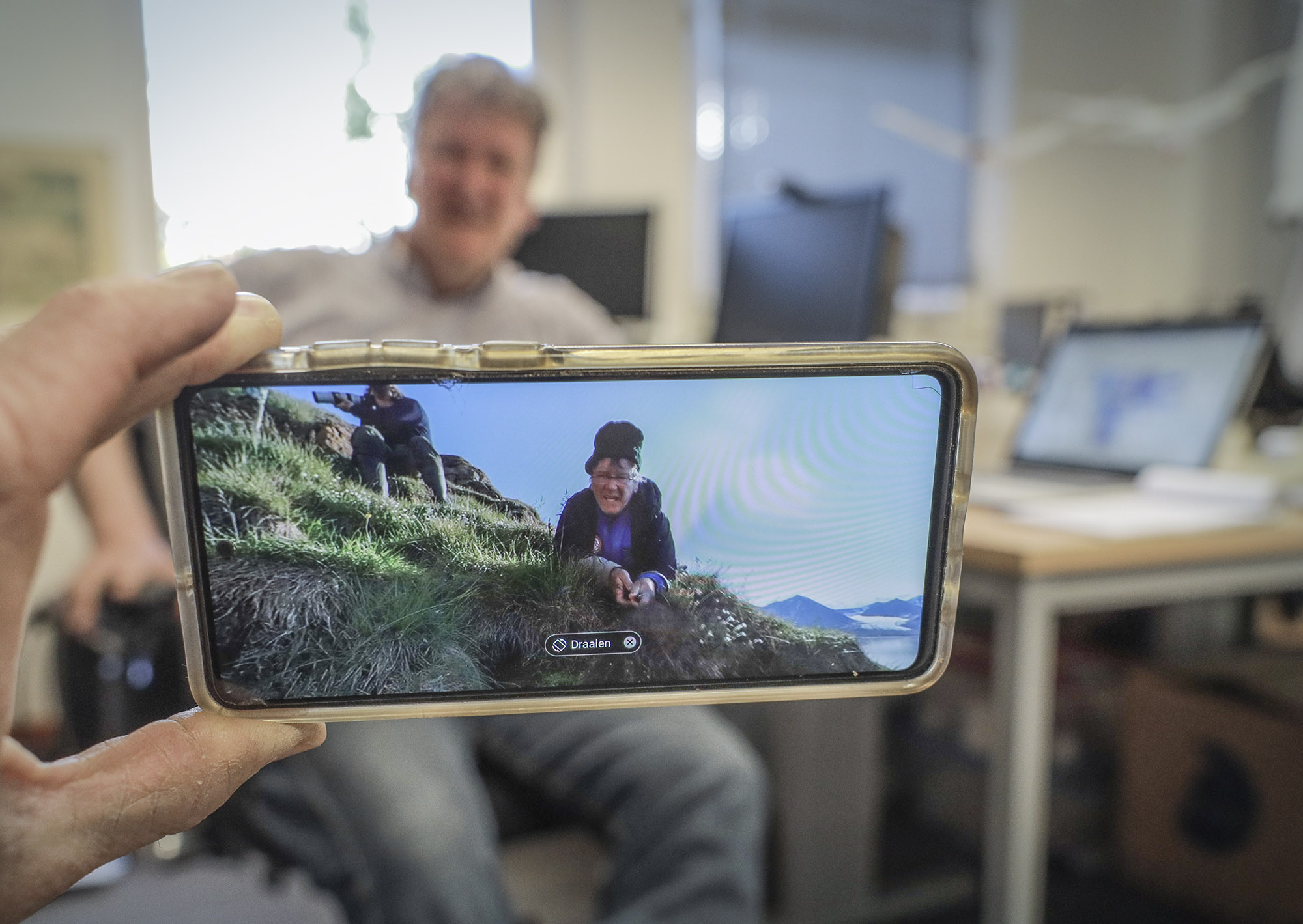Ecologist Loonen to travel to ever-changing Spitsbergen for the thirty-fifth summer

For the thirty-fifth year in a row, Maarten Loonen will be spending his summer on Spitsbergen. In July, he will also be leading a new polar expedition involving scientists, journalists, policymakers, and tourists. ‘It’s a great privilege to be able to get people engaged in the area and the research.’
Written by Marjolein te Winkel / Photos by Henk Veenstra
Maarten Loonen tells stories about climate change like no other. The associate professor of Arctic Ecology, who is affiliated with the University of Groningen’s Arctic Centre, has been visiting Spitsbergen every summer since 1988. He has witnessed the transformation with his own eyes.
Not a ‘cold coast’
In 1925, the archipelago situated in the Arctic Ocean became known as Svalbard. ‘Svalbard’ means cold edge or cold coast in Norwegian – quite a fitting name for a group of islands that are largely covered in pack ice. Or should I say, it was a fitting name, back when Loonen spent his first summer in Ny-Ålesund, Spitsbergen’s most northern village, some thirty years ago. ‘The village was surrounded by pack ice, which closed off the land from the warm sea water and prevented the air from warming up.’ But the ice retreated and now lies around 200 kilometres to the north. ‘Now, there is nothing holding back the warm seawater, so the air above the land is warming up,’ explains Loonen. ‘On top of that, a dark surface, without snow, retains more heat than a white, snow-covered surface. This means that winters are six degrees warmer than they were 30 years ago.’

Impact on wildlife
It also rains more often in the winter these days. ‘The rain freezes, forming a layer of ice on the tundra. This means that reindeer have nothing to eat, so they die and become food for the foxes. As a result, the fox population increases and, when the geese return the following spring, the foxes eat all the chicks. The first time this happened was back in 1994, when half the reindeer population died; since then, it has happened more often.’
The increasing level of precipitation and the rising temperature are also causing the glaciers to shrink. Each year, Loonen can sail further into the bay and spots bearded seals and polar bears in places that were covered by ice the year before.
And this is having an impact on the wildlife; Loonen has been observing and recording these changes for more than thirty years.
Since 1990, he has been collecting data on the geese that flock to Spitsbergen in the summer to breed. ‘This is a long biological series and is therefore a unique dataset,’ says Loonen. ‘I also keep track of associated developments, such as the effects on vegetation and on the fox population, for example. All of these factors have emerged over the years.’
An internationally renowned research village
The village where Loonen spends his summers is called Ny-Ålesund, a former mining village that in recent decades has evolved into an internationally renowned research village. It has a harbour and an airport, and apart from the Dutch station run by the University of Groningen, the Norwegians, British, French, Germans, Italians, South Koreans, Chinese, and Indians also have research stations there. The climate, the natural environment, the glaciers, and ‘every single creature living in the fjord’ are the subject of scientific research. Rockets are fired, the atmosphere is measured, and large telescopes track the position of satellites.

Prominent member of the community
In this remote, restricted environment, Maarten Loonen has progressed from being an inexperienced PhD student who slept during the day and observed the geese at night to being one of the most prominent members of the village community, where everyone knows who he is. And everyone there knows that when the geese return, Maarten is never too far behind. For the past few years, he has chaired the meetings held between all the scientific organizations that are based in Ny-Ålesund. ‘Representatives from all groups – there are 22 of them now – meet twice a year. We update each other about our research, and we talk about the developments in the village. Sometimes, different parties have different interests, and there’s a risk of conflict. In times like that, these meetings are important. The chair’s job is to keep everything on track.’
Will Ny-Ålesund remain a radio-silent village?
In recent years, the main talking point has been whether or not to maintain radio silence. ‘Ny-Ålesund is one of the few places in the world where you have to turn off your mobile phone. Some researchers come here precisely because their equipment is disturbed by mobile phone signals. But it seems there is no getting away from it. We recently discovered that a heating system in the village has a Bluetooth controller that interferes with a telescope.’ Many researchers also benefit from having access to a mobile network, for example, to process research data more quickly or to shoot drone images. ‘My geese wear a collar fitted with a GPS recorder, which collects data throughout the summer. But I can only get my hands on that data in the autumn when the geese fly to Scotland, where the recorder is picked up and read by a mobile network. It would be easier if we could access that data straight away.’ Nevertheless, he is opposed to allowing a mobile network in Ny-Ålesund. ‘The radio silence is one of the things that makes this place so unique.’
When nature gets the chance...
This summer, Loonen is taking a large group of scientists from various disciplines to visit that unique location. They will sail from the capital, Longyearbyen, to the remote island of Edgeøya. Fifty tourists will also participate in the polar expedition, as well as a group of policymakers, journalists, politicians, and artists. The North Pole is currently receiving a lot of attention, remarks Loonen. ‘The landscape is spectacular, and there are many thrilling stories to be told about it.’ Loonen has been sharing stories with the public ever since the early days of his career: in newspapers and on TV programmes, during lectures for groups of interested people, and in lecture halls filled with students. ‘It’s a tremendous privilege to be able to do all of this. I want to get people engaged in the area and in the research. It’s not about money or fame, I see it as a duty.’ His stories often revolve around climate change, but, for him, the beauty of the landscape is just as important. ‘Nature is magnificent when it gets the chance to be nature. Spitsbergen is a prime example of that. It’s just so incredibly beautiful there.’

More news
-
19 December 2025
Mariano Méndez receives Argentine RAÍCES award
-
18 December 2025
Why innovate, and for whom?
-
17 December 2025
Ben Feringa wins Feynman Prize
